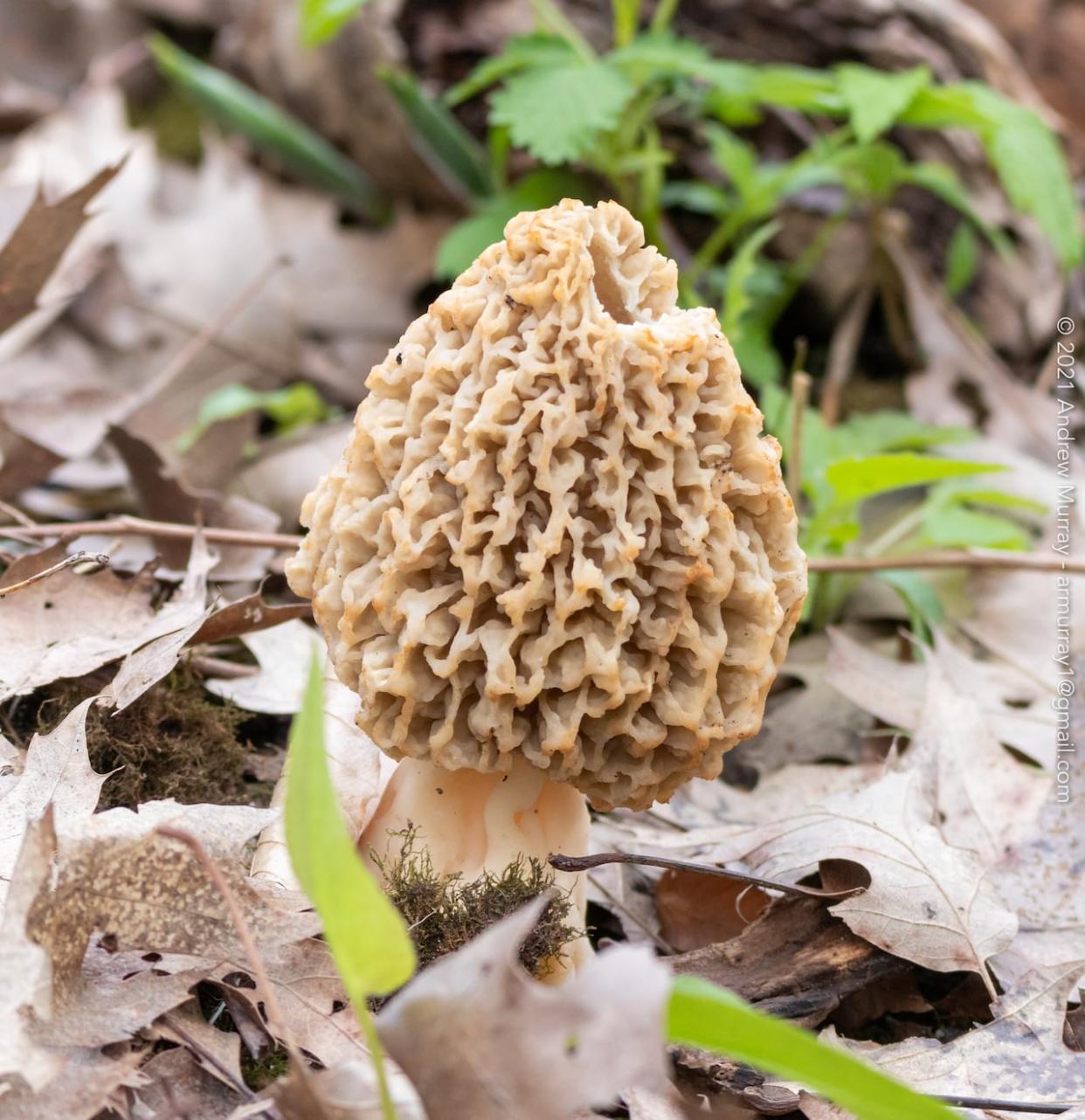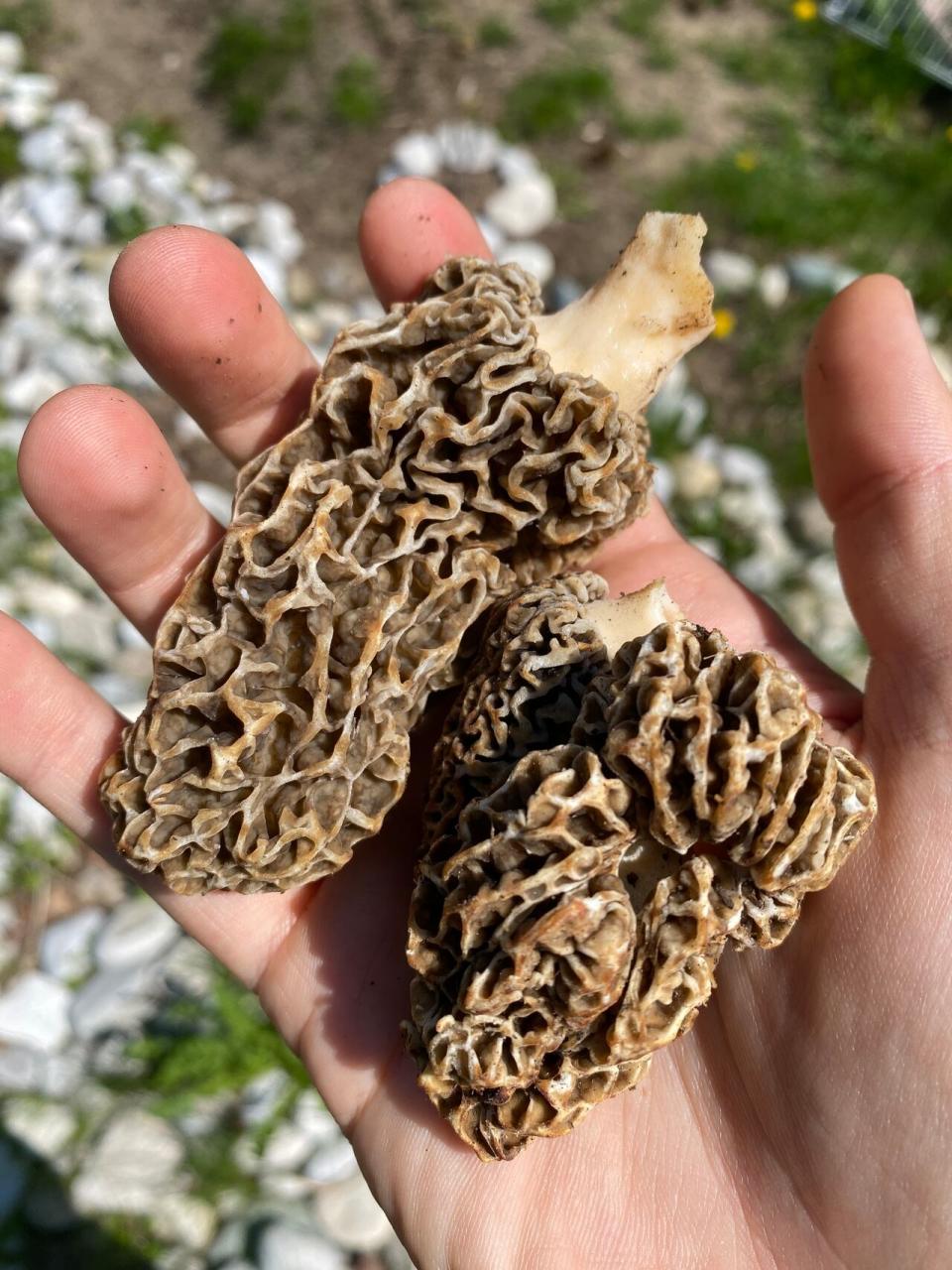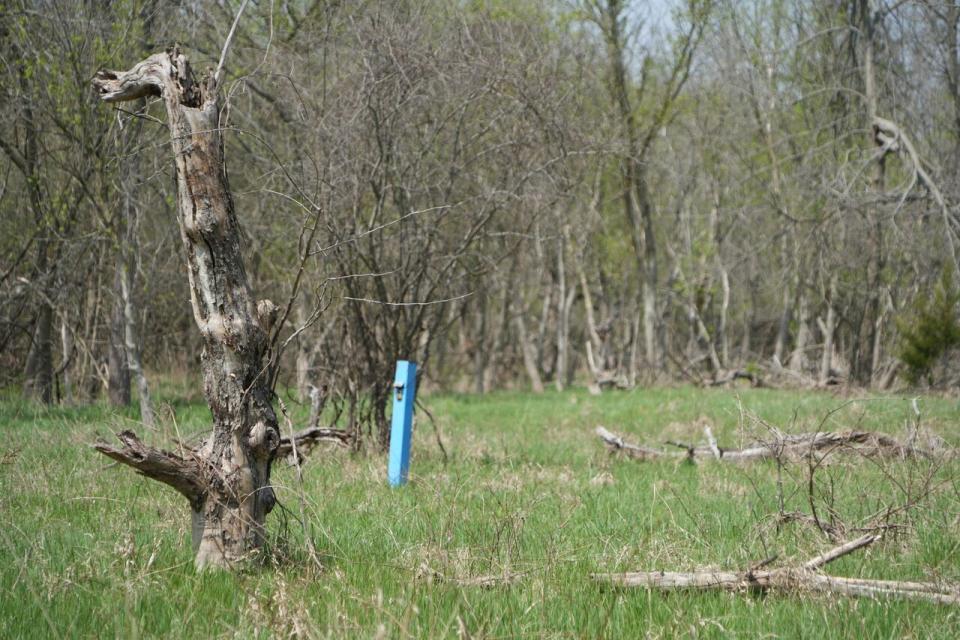Location, location location: Why real estate's golden rule also applies to morel mushrooms

It turns out morel mushrooms and real estate have something in common.
Location, location, location is the golden rule for buying or selling a home as much as it is for morels — the elusive and prized edible variety of mushroom that often grows in the same place every year and, according to a fungus expert, can be potentially dangerous depending on where you pick them.
Morels are brown, black or yellow and have elongated caps with a ridged and pitted appearance that resembles a honeycomb. With a strong and distinct flavour, they're prized by chefs and amateur cooks alike for their ability to bring new life to dishes.
For those in the know, places where morels grow are closely guarded secrets. For the uninitiated, finding them while out on a walk in the woods is rare, according to Andrew Murray, an amateur naturalist who often spends his free time admiring the beauty of nature.
"I just take pictures and leave them be," he said, noting he's never eaten one. "They're quite rare in my experience. I see maybe one every few years. The last one was in 2021."
False and true morels easy to discern
The mushroom's elusive nature and coveted status might be why people seem to be so keen to put pictures of them online every spring.
Over the past few weeks, morel hunters across Canada have been posting their hauls to social media groups — from a lonesome mushroom plucked from the lawn by a suburban dad, to morels gathered by the dozen, harvested from a top-secret hunting ground.

These morel mushrooms were found at the Fanshawe Conservation Area in London, Ont. (Brendon Samuels/iNaturalist)
Murray doesn't eat them because there are false morels out there and, as he puts it, "I don't trust my fungal identification skills."
False morels can cause severe illness and, in rare cases, death if ingested, according to the UBC Beaty Biodiversity Museum in Vancouver.
The good news is spotting the difference between a false morel and a real one is relatively easy, said Greg Thorn, a biology professor at Western University in London, Ont., who studies fungus.
"The false morel looks more like the brain on a stick than a honeycomb, so it has quite a different morphology," he said, noting, "'false morel' is just called that because they occur at the same season in the spring when there's not very many other mushrooms out there."
Morel lesson: Stick to conservation areas, parks
Thorn said the most important consideration for morel hunters is where they harvest their mushrooms. Morels have a tendency to absorb and concentrate toxins found in their environments, according to research.
"They're renowned for taking up toxins in the soil, including metals like lead, or cadmium or arsenic." He noted that while abandoned apple orchards are prime locations for morel hunting, they should be avoided because of the historical reliance on arsenic-based pesticides on apple crops.
A 2010 study found concentrations of lead and arsenic in morel mushrooms harvested from a former apple orchard in New Jersey; a 2018 study found concentrations of radionucleides from wild mushrooms gathered in Chornobyl, the site of an accident at its nuclear power plant in 1986.

Morel hunters should avoid harvesting mushrooms in places like this abandoned apple orchard in London where the fungus can absorb heavy metals such as lead and arsenic that have been left by decades of pesticide use. (Colin Butler/CBC News)
Thorn said mushrooms are the fruiting body of a much larger organism that lives underground, a vast hidden network of filaments and threads that take nutrients from soil or a rotten log.
"Fungi, for whatever reason, we don't know why they don't discriminate between compounds they do need and compounds they don't need, like a radioactive cesium," Thorn said. "They're very, very good at concentrating these compounds.
"You really don't want to be eating a dinner of radioactive cesium or arsenic."
It's why Thorn recommends sticking to conservation areas or parks to gather mushrooms and to avoid areas that are known to be polluted, such as abandoned apple orchards or brownfield sites.
Thorn said that given the early spring, it's likely this year's morel season will stretch well into May, meaning the mushrooms could continue to sprout until Mother's Day on May 12.

